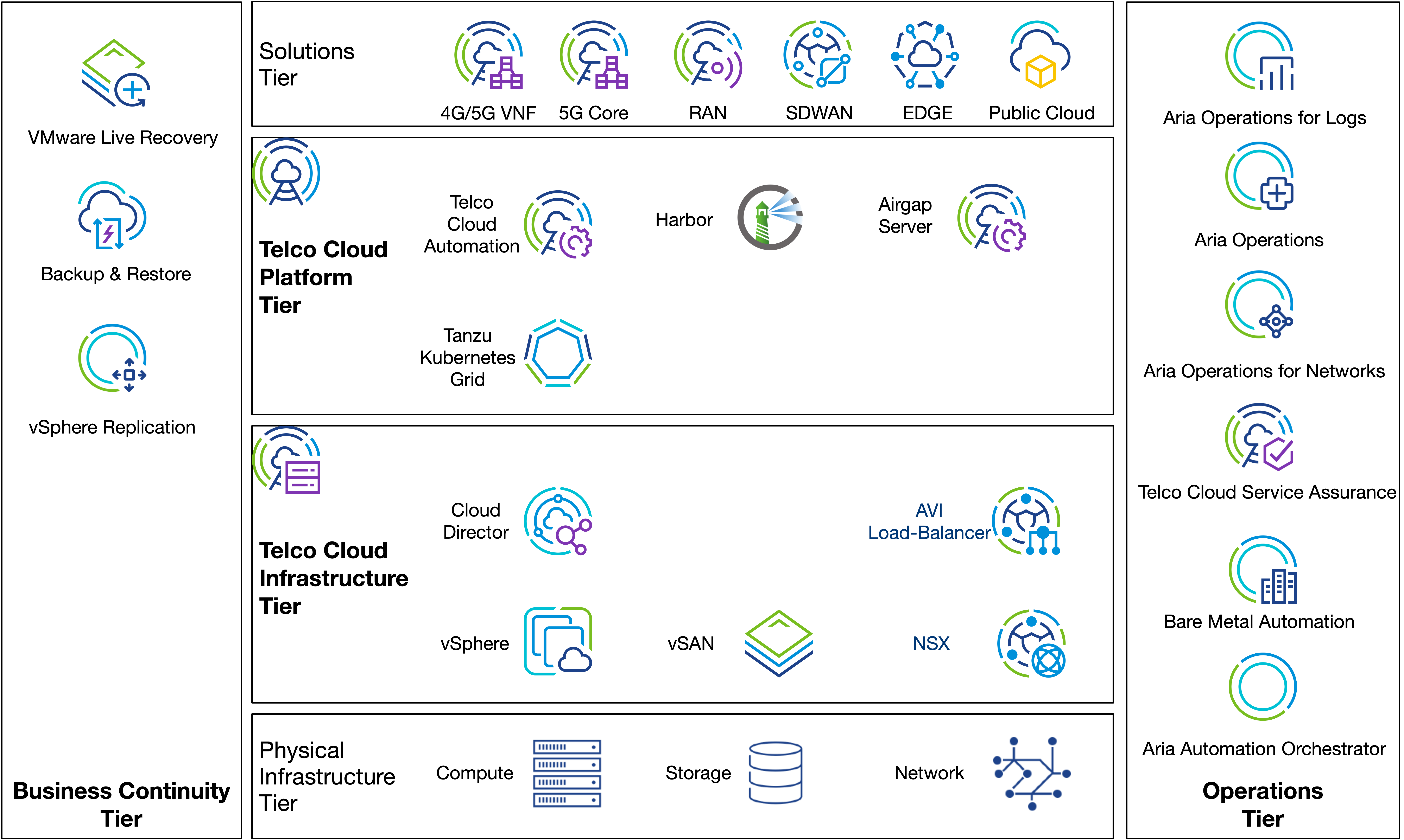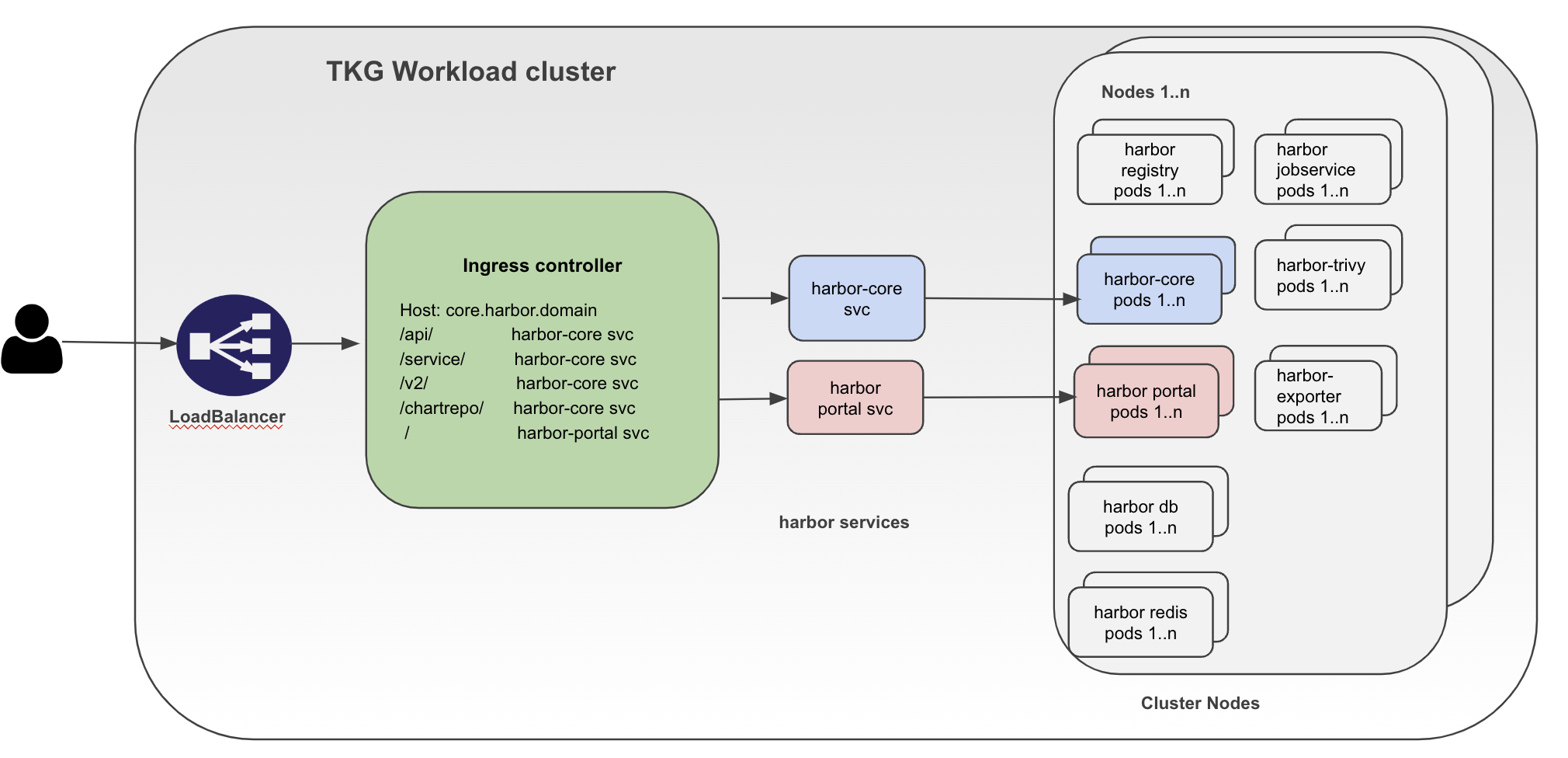Harbor is an open-source registry that secures artifacts with policies and role-based access control, ensures images are scanned and free from vulnerabilities, and signs images as trusted. VMware Telco Cloud Platform™ users use Harbor to store Helm charts and docker images required for CNF deployment.
Currently, Telco Cloud Platform users deploy Goharbor offline installer on a custom VM using Docker Compose. Docker Compose lacks features like auto-scaling, high availability and advanced networking options that are essential for handling production workloads with high demand.
Note: Starting from release 4.0.1, VMware Telco Cloud Platform offers Harbor CNF catalog on top of CaaS clusters. This catalog is based on the open-source goharbor project.
It provides better performance with scale architecture (see Harbor Concurrency Limits).
VMware Telco Cloud Automation™ (TCA) can be used to manage Harbor LCM operations such as:
Harbor installation using CNF instantiation flow.
Harbor Day-1 operations such as Harbor reconfiguration, Harbor version upgrade, Harbor cert rotation, Harbor Trivy Database update and so on.
Raising alarms when Harbor pods are down using TCA Alarm service.
CNF Inventory detailed view of Harbor pods on TCA UI.
Harbor observability, monitoring, and maintenance tasks using workload cluster Add-ons such as:
Backup and restore of Harbor pods using Velero addon.
Log collection of Harbor pods using Fluentbit add-on.
Provision of Persistent volume for Harbor pods using vSphere-csi add-on.
Telco Cloud Platform architecture

Harbor CNF architecture
Harbor CNF consists of the following components:
Harbor Registry to host images and charts
Ingress Controller to act as reverse proxy for harbor
Load Balancer to provide fault tolerence for harbor
